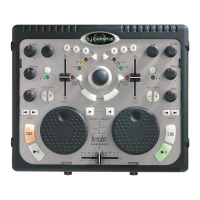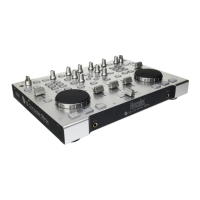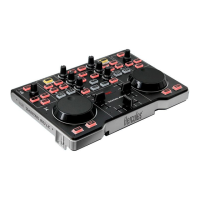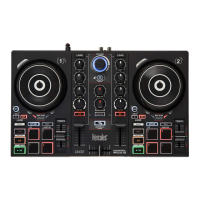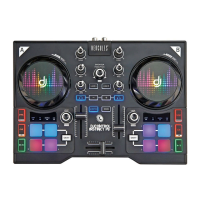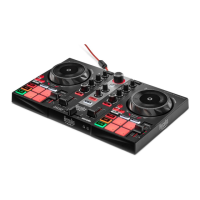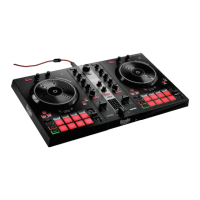8/30 – User Manual
6. DJ CONTROL STEEL FEATURES
6.1. Jog wheels
The jog wheels on your DJ Control Steel emulate vinyl turntables: turning a jog wheel lets you
scratch or move the cursor backward or forward within music tracks, allowing you to select the
cue point where playback will start for the audience.
The jog wheels feature adjustable resistance: if you wish, you can adjust the screws located on
the underside of the device under each jog wheel to increase or decrease its resistance,
according to your preference. You can also adjust their sensitivity using the control panel: you
can either keep the default sensitivity, or divide it by a factor of 2 or 4 to make them less sensitive.
The jog wheels can also be disabled via the control panel.
You can use the Scratch button to change the function of the jog wheels (scratch mode is
enabled by default): press the button to switch to the seek function, allowing you to move
backward or forward within a track. Press the button again to return to the default scratch
function.
You can also use the jog wheels to browse through music lists. When browsing through a
directory containing lots of music files, simply turn the jog wheel while keeping the Up or Down
button on your console pressed down in order to move through the list more quickly.
6.2. Faders (sliders)
Cross fader
Your DJ Control Steel plays 1 stereo music track per deck (2 stereo music tracks simultaneously).
The cross fader moves between the left and right decks, allowing the DJ to adjust the mix
between the 2 decks, and therefore between the 2 tracks.
Setting the cross fader completely to the right means that the mix (the music the audience hears)
comes 100% from the right deck: the audience doesn’t hear the music played on the left deck.
Setting the cross fader in the center means that the music comes 50% from the left deck and 50%
from the right, and so on.
2 Pitch faders
You can use the pitch faders to adjust the playback speed of a track, increasing or reducing its
BPM (Beats Per Minute) rate, in order to make dancing easy by setting new music tracks at the
same BPM as the previous track so that dancers don’t need to change their rhythm during the
transition from one track to another.
In general, adjusting the pitch changes the music’s speed and tone: faster means a higher tone,
slower means a lower tone. However, you can keep the same pitch and tone by pushing the Beat
Lock button before changing the pitch so that the pitch fader only changes the tempo (i.e. speed)
of the track, and not the pitch itself. This mode is called Master Tempo.

